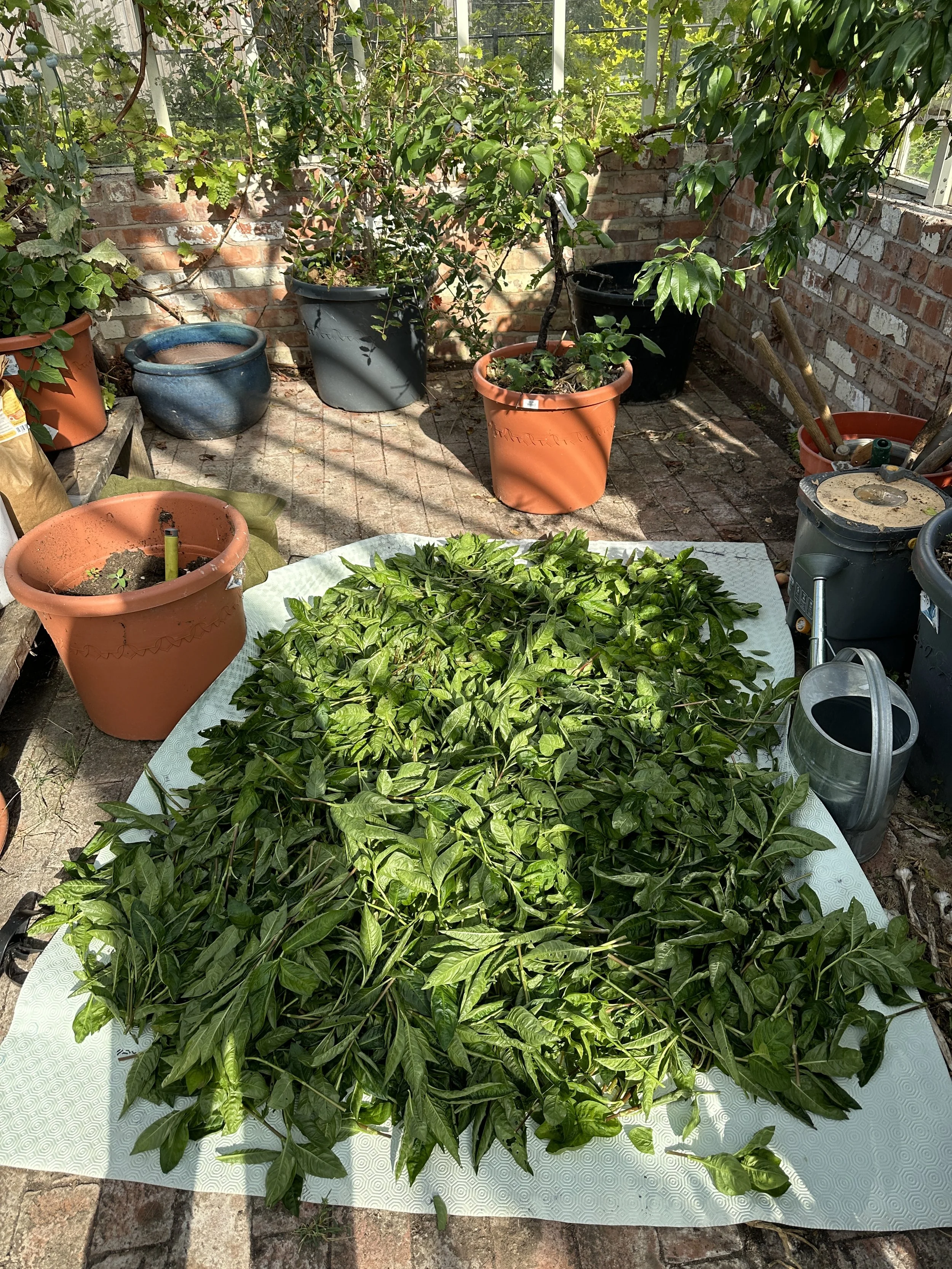Making Indigo Sukumo with Persicaria Tinctoria Post 1 of 2

Fermentation is something I do nearly everyday, be it composting, making rotted garden tinctures, creating vinegars, wines, lacto-bacterial tasty ferments or making Douchi, miso and soy sauce, so when I realised that the traditional way of composting Indio leaves in Japan produced something rather special, I had to have a go.
This year I have grown 3 varieties of Persicaria Tinctoria and despite it being the worst summer ever her in the UK, it’s grown like a champion, I assume it’s a combination of loving the wet weather, and loving my sticky compost, which I wasn’t entirely sure was going to be suitable, but it seems to be thriving. It has had a couple of handfuls of chicken manure once in June and then when the first harvest came off just to give it a boost.
Persicaria Tinctoria taken Mid July 2024
Should be noted that the seeds were from Baliwick blue and they germinated so well, much better than any other seeds 'I’ve purchased before, plus you get a decent amount. In addition Georges indigo pigment is lovely to use.
I harvested about half, I want some to go to seed so I have lots foe next year, as my intention is to upscale again somewhat on this harvest for experimentation.
I am not following the traditional method of composting where the leaves are dried first, this is because the yield was small enough to remove all the stems before I started, plus I wanted the natural moisture levels in the leaves to do the work for me so I didn’t have to guess on the first go.
I wilted the leaves somewhat overnight in a warm greenhouse:
The. removed the stalks as much as possible which took about an hour and then blitzed them in my Thermomix blender to form a roughly chopped mulch.
These got stuck in a pan, with a thermometer and I placed them in a warm environment, we have a boiler room which is very toasty, this was just to give it a head start. The leaves started composting immediately and went up to just over 40 degrees in around 24 hours.
The fermentation was started on the Saturday and on Monday morning its settled into a comfortable 40 degree pattern, I am giving it a turn once a day, and its already started to smell of ammonia, which is a great sign as this means that the bacteria which like alkaline conditions are getting to work. (this smells very similar to Alkaline bean ferments I’ve made before, but this is in contrast to how traditional Sukumo is made, as that tends to smell fresher and more palatable, the water content was high due to using fresh leaves and this has reduced it into a paste, however the paste works very well. see the second blog for more info.


